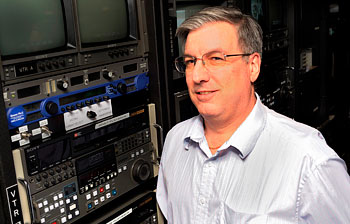Snell HD Conversion Shines at WNET

Frank Graybill
NEW YORK
In the age of HDTV, advanced conversion technology is no longer an option but a requirement for broadcasters of all sizes, public or commercial. Here at WNET.org, we are no exception. As the premier public media provider for the New York City metropolitan area and parent company of public television stations WNET and WLIW, WNET.org has deep roots in the New York community and a tradition of embracing technology to stay on the leading edge of public broadcasting. This is a strategy that has served us well. WNET is the most-watched public station in the United States, and WLIW is the third most-watched.
IMAGE CONVERSION A NECESSITY
With the launch of our HD broadcasts, we have come to rely heavily on state-of-the-art conversion technology, including Snell's Quasar Ph.C motion-compensated upconverter, to ensure that our HD viewers receive the highest possible picture quality.
The Quasar Ph.C is used for off-line conversion of content from many sources, including that produced by WNET.org and feeds from our network, PBS.
A large percentage of this content arrives in our studios in SD, and the Quasar Ph.C offers the most cost-effective method we've found of ensuring the high-quality HD output that we—and our viewers—require.
After evaluating a number of conversion systems, Quasar Ph.C was deemed far superior in terms of its ability to match our functional requirements. The system uses motion compensation that's based on a number of proprietary Snell technologies that provide sharp and clear upconverted pictures from any source, whether it's video, film, live action, or animation. The Ph.C technology ensures that each individual element and characteristic of the picture is seamlessly processed with absolute precision, using the most appropriate conversion algorithm.
Another extremely important feature for our operation is Quasar Ph.C's built-in aspect ratio converter, since a significant percentage of our content is anamorphic. This feature provides presets for all commonly used aspect ratios and ensures that material in 16:9 can be automatically converted to 4:3 with no loss of quality. Also, the Quasar Ph.C's seamless handling of closed captioning and timecode is a critical requirement for us, and such capability is not typically available as a standard feature in other brands of conversion equipment.
As a public broadcasting organization, we are funded by foundational grants and viewer contributions and, as such, are continually pressed to stretch our operating budget as far as possible. The current economic climate has made this task much more difficult. Not only is Quasar Ph.C extremely affordable, it has provided us with an ideal solution for leveraging material from a wide range of SD sources as we've transitioned to HD.
While HDTV is now a fact of life for all broadcasters, the truth is that we will have to deal with an enormous volume of SD content for many years into the future. With the Quasar Ph.C, standard-definition content is no barrier to a high-quality HD broadcast, and the system will serve us well as our operation evolves.
Frank Graybill currently serves as director of engineering at WNET.org. He may be reached atgraybill@thirteen.org.
For additional information, contact 818-556-2616 or visitwww.snellgroup.com.
Get the TV Tech Newsletter
The professional video industry's #1 source for news, trends and product and tech information. Sign up below.
